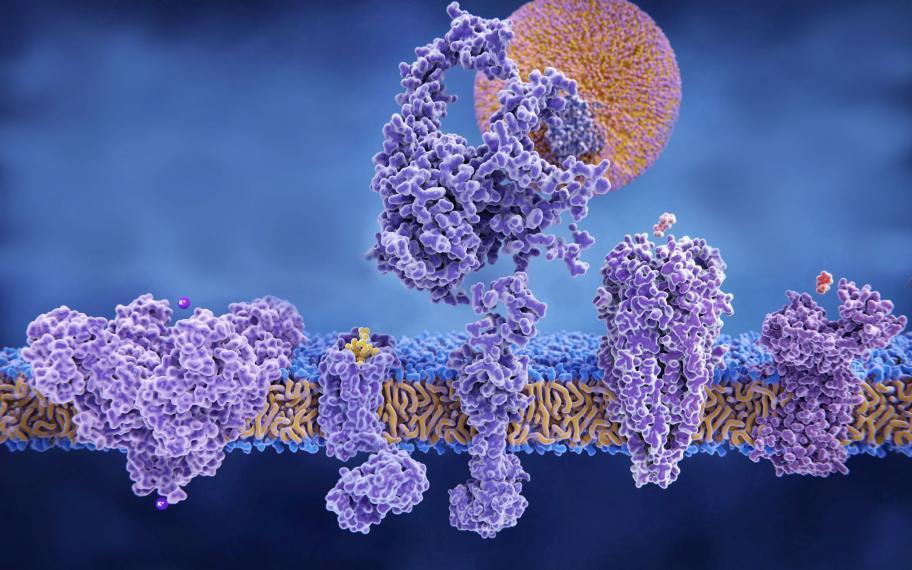On the Surface

New life-like model of cell membrane will enable a better look at cell surface proteins.
Our hearts could not beat without transmembrane receptors. These receptors are proteins fixed to the surfaces (i.e., membranes) of our cells. They receive millions of ‘messages’ each day; these messages tell them what the cell needs to do, such as to contract the heart. Many pharmaceutical drugs influence the activity of transmembrane receptors to produce a desired effect (e.g., to decrease blood pressure). The most popular cell membrane model that is used to study and better understand transmembrane receptors is the tethered bilayer lipid membrane (tBLM). Transmembrane receptors must be inserted into the cell membrane model before they can be studied. Currently, tBLMs can only be used to study some receptor types, but not others. This is because those tBLM structures do not leave enough space on the outside of the membrane for larger proteins to fit.
University of Guelph chemistry professors France-Isabelle Auzanneau and Jacek Lipkowski led a team that developed a more robust tBLM model, which can be used to study a broader array of transmembrane receptors. They accomplished this by creating a new tethering molecule, which connects the outer membrane to a solid support layer (such as gold, silicon or glass). This modified tethering molecule allows more space for larger transmembrane receptor proteins to attach to the cell membrane model. The research team successfully incorporated a large protein into the membrane model, demonstrating that their new tBLM model allows a wider range of transmembrane receptors to be studied. Their new cell membrane model also had characteristics that closely resembled a real cell membrane, including its membrane thickness and ability to hold electric charge.
“This new tethering molecule allows us to construct an excellent model of the cell membrane for studying transmembrane receptors,” says Prof. Auzanneau. “This may enable scientists to shed light on how the body’s many different transmembrane receptors work. Consequently, this newfound knowledge can be used to inform the development of new pharmaceutical drugs.”
This work was supported by the Natural Sciences and Engineering Research Council of Canada (NSERC).
Priske G, ZhangFei S, Abbasi F, Lipkowski J, Auzanneau F-I. Synthesis and electrochemical characterization of 4-thio pseudo-glycolipids as candidate tethers for lipid bilayer models. Electrochim. Acta. 2019. doi: 10.1016/j.electacta.2018.12.048